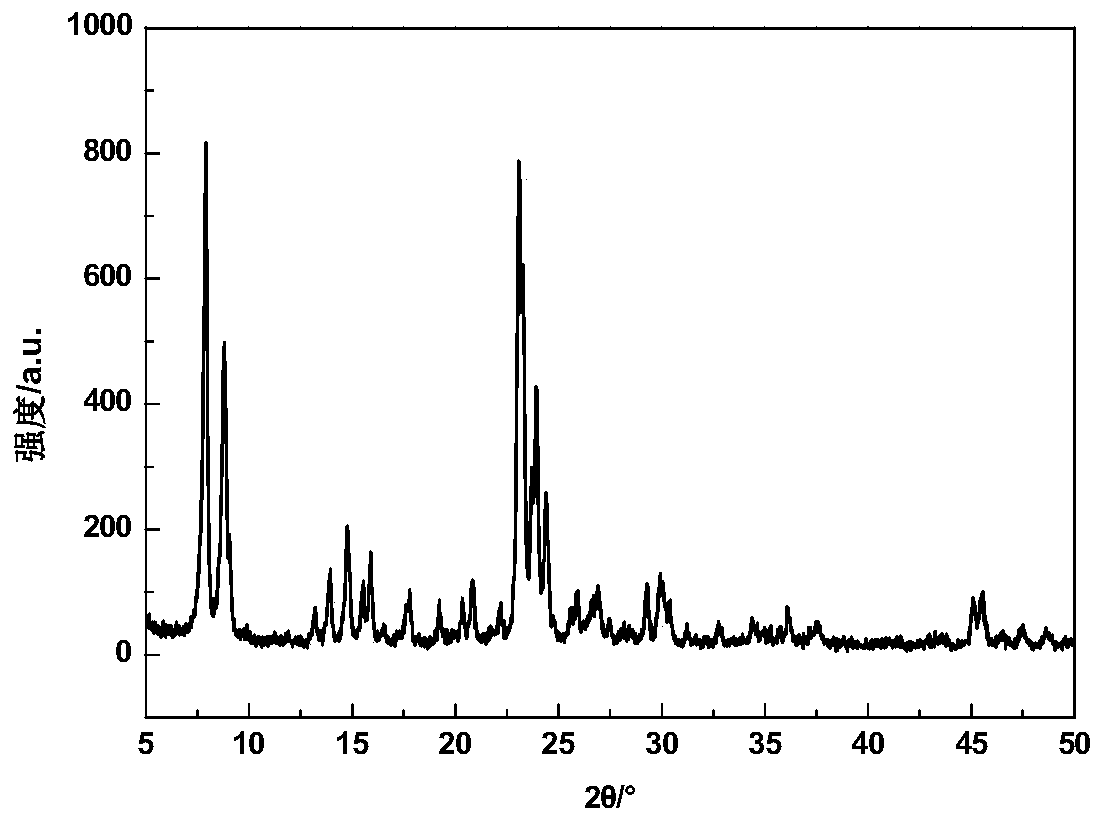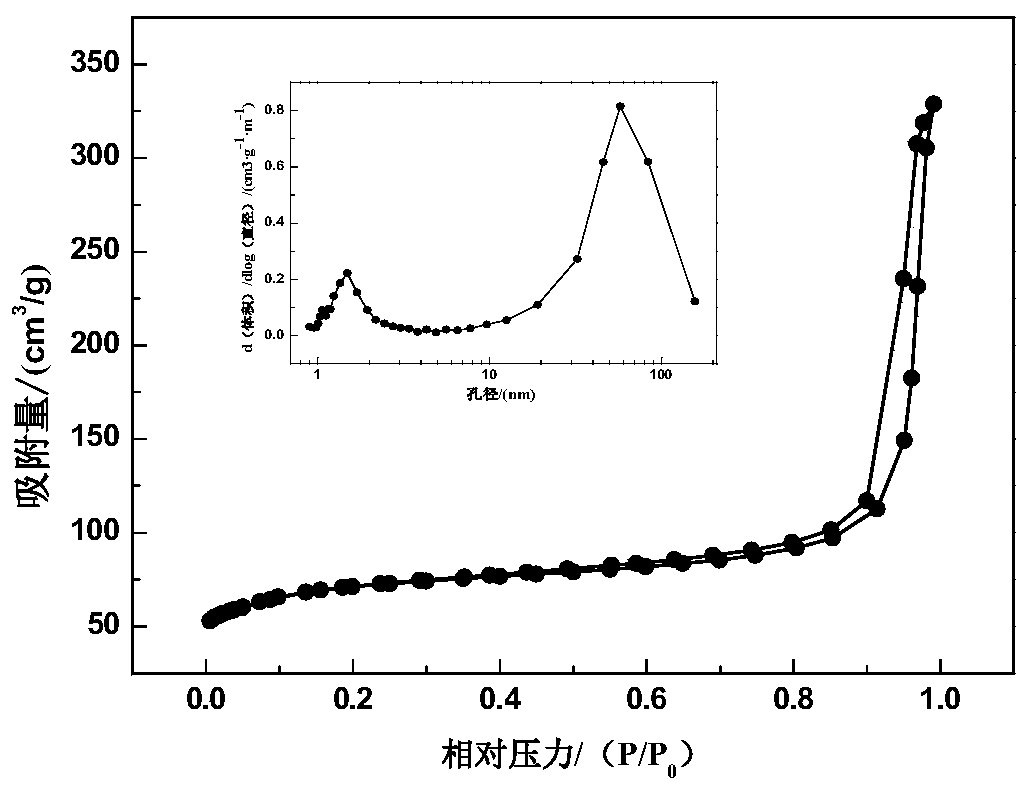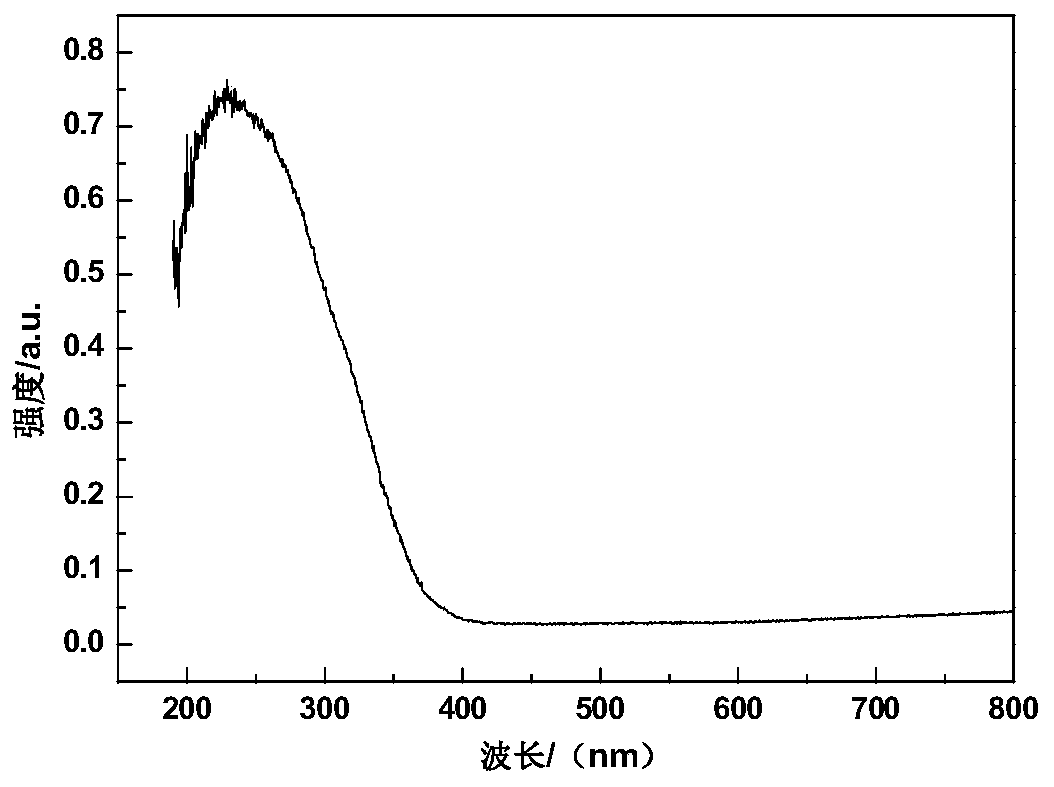Large-particle titanium silicalite molecular sieve with excellent diffusion performance and preparation method thereof
A technology of titanium-silicon molecular sieve and diffusion performance, which is applied in molecular sieve catalysts, chemical instruments and methods, and bulk chemical production. Improved diffusion performance, easy solid-liquid separation, and high catalytic activity
- Summary
- Abstract
- Description
- Claims
- Application Information
AI Technical Summary
Problems solved by technology
Method used
Image
Examples
Embodiment 1
[0038] According to the method provided by the Chinese patent (CN95105343.4), weigh 22g of CaO and place it in a three-neck flask, digest it with 200g of water to form a lime emulsion, heat it in a water bath to 40°C, and under strong mechanical stirring, dissolve at a rate of 500mL / min. The flow rate into CO 2 , CO 2 with Ca(OH) 2 The reaction takes place under highly turbulent conditions, producing ultrafine particles of calcium carbonate. After reacting for 20 minutes, the pH value of the suspension is 7-8, filter the suspension, and dry the solid to obtain ultrafine CaCO 3 , its average particle size is about 70nm, recorded as CaCO 3 -A.
Embodiment 2
[0040] According to the method provided by the Chinese patent (CN01145312.5), weigh 50g of CaO in a three-necked flask, add 500mL of water at a temperature of 95°C, stir evenly, and cool to obtain Ca(OH) 2 raw material liquid. Roughly mix the raw material solution with water to contain Ca 2+ 0.8mol / L Ca(OH) 2 Suspension, using EDTA complexometric titration to determine Ca(OH) 2 Ca in suspension 2+ the exact concentration. Take 200mL of 0.8mol / L Ca(OH) 2 Suspension, add 8mL ammonia water, mix evenly, pass CO2 at a flow rate of 50mL / min 2 , the reaction temperature is 30° C., and the reaction ends when the pH of the suspension reaches 8.5. The morphology of the obtained calcium carbonate is spherical, and the average particle size is about 150nm, recorded as CaCO 3 -B.
Embodiment 3
[0042] Prepare nano magnesium carbonate according to the method that Chinese patent (CN104291366A) provides. Prepare an ammonia solution with a concentration of 1mol / L, and pass a certain amount of CO 2 gas to make NH 3 with CO 2 The molar ratio is 2:1, then add 0.1g / L nano-magnesium oxide grains with an average particle size of 15nm, and stir slowly to obtain A solution; prepare MgCl with a concentration of 3mol / L 2 solution, and drop 1.4g / L of ethylenediamine polyoxyethylene block polyether, 2.3g / L of alkanolamide polyoxyethylene ether, 1.8g / L of hydroxypropyl methylcellulose, and slowly stir Evenly, B solution is obtained; at 65°C, slowly add a certain amount of B solution to A solution, and finally maintain Mg 2+ :NH 4 + :CO 2 The molar ratio of the solution is 1:4:2. After the dropwise addition, slowly stir for 10min, let it stand for 45min, then filter under reduced pressure and wash repeatedly with absolute ethanol for 5 times, and finally dry at 120°C for 5h to o...
PUM
| Property | Measurement | Unit |
|---|---|---|
| size | aaaaa | aaaaa |
Abstract
Description
Claims
Application Information
 Login to View More
Login to View More - R&D
- Intellectual Property
- Life Sciences
- Materials
- Tech Scout
- Unparalleled Data Quality
- Higher Quality Content
- 60% Fewer Hallucinations
Browse by: Latest US Patents, China's latest patents, Technical Efficacy Thesaurus, Application Domain, Technology Topic, Popular Technical Reports.
© 2025 PatSnap. All rights reserved.Legal|Privacy policy|Modern Slavery Act Transparency Statement|Sitemap|About US| Contact US: help@patsnap.com



